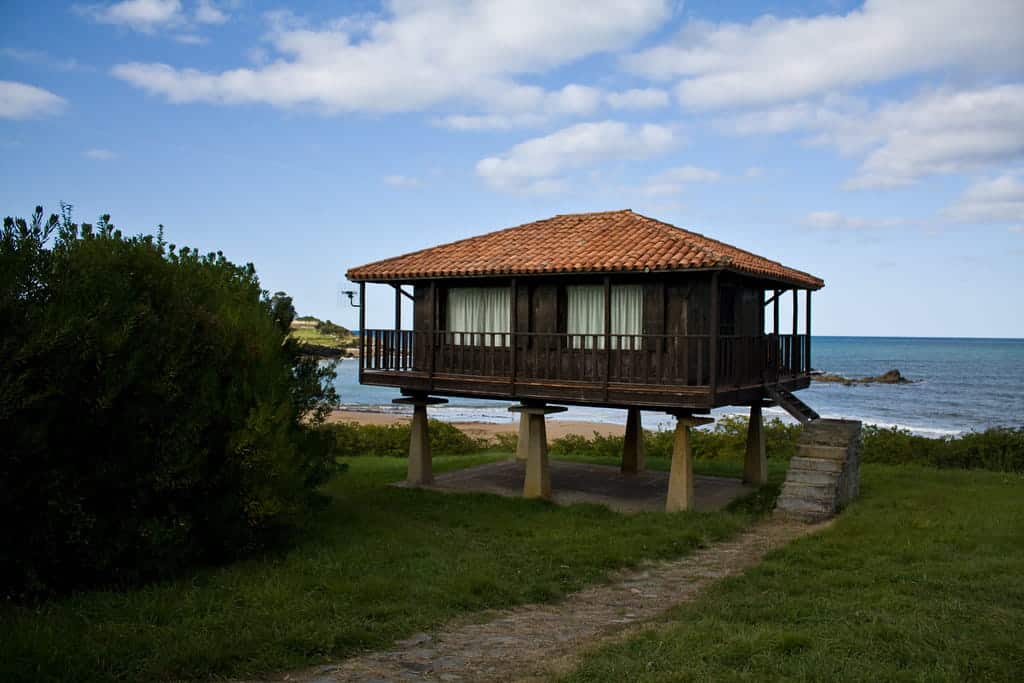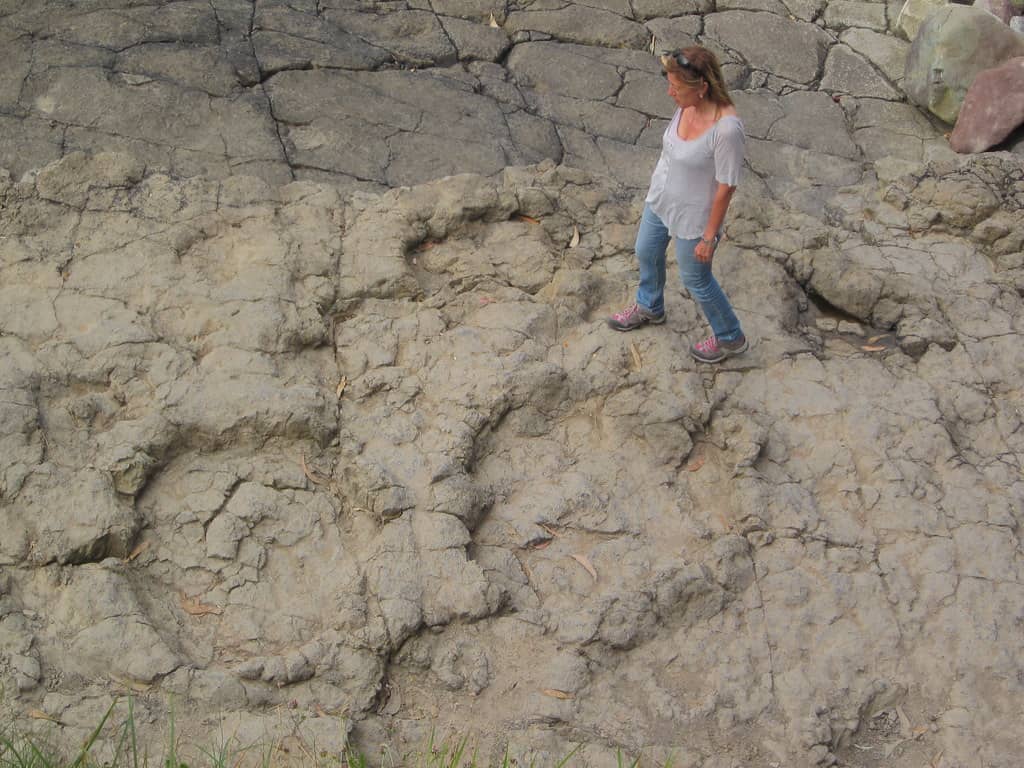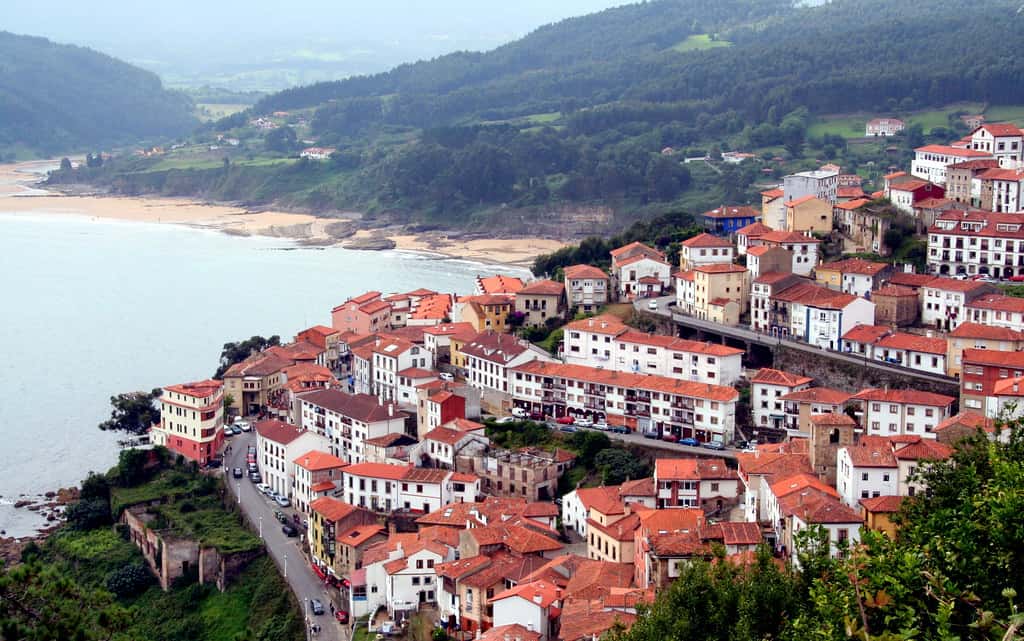
If you are walking the Camino del Norte, you’ve probably heard of towns like Llanes, Ribadesella or Villaviciosa. But in between, almost quietly, there’s Colunga, a stop along the way that surprises with its mix of history, sea and nature.
This Asturian town is much more than just a stopover. Here, you can recharge with good cider and even better food, visit centuries-old churches, or even travel millions of years back in time by visiting beaches with dinosaur footprints. And if you still have energy, the surrounding area offers routes along the coast or the mountains with unforgettable views.
In this guide, we’ll tell you everything you can see and do in Colunga as a pilgrim so that this section of the Camino becomes one of the most cherished parts of your journey.
Índice de contenidos
- 1 Colunga, a key point on the Camino del Norte
- 2 What to see and do in Colunga
- 2.1 The town of Colunga and its heritage
- 2.2 The Island: beaches and coastal paths
- 2.3 La Espasa Beach: nature and leisure
- 2.4 La Griega Beach and Dinosaur Footprints
- 2.5 Jurassic Museum of Asturias: A Journey Through Time
- 2.6 Lastres: Maritime Charm and Panoramic Views
- 2.7 Santiago de Gobiendes Church: Pre-Romanesque Heritage
- 2.8 Sierra del Sueve: Nature and Hiking Trails
- 3 Local Cuisine, Festivals, and Cultural Events
Colunga, a key point on the Camino del Norte
Before talking about Colunga and the Camino del Norte, let us tell you about the advantages of taking the organised Camino de Santiago. This is an ideal option for both first-time pilgrims and those who wish to focus solely on enjoying the journey without worrying about accommodation or luggage transport.
Agencies like Mundiplus advise on different routes, adjusting the number of stages and the difficulty level according to each traveller’s needs.
The Camino del Norte is one of the oldest historical routes of the Camino de Santiago. It runs along the entire Cantabrian coast, offering sea and mountain landscapes, fishing villages, and a peacefulness that distinguishes it from more crowded routes.
On this route, Colunga becomes a particularly attractive stop due to its heritage, cuisine, and its proximity to iconic landmarks like the Jurassic Museum and the beach of La Griega.
Choosing the Camino del Norte means opting for a less crowded experience, with challenging stages rewarded by breathtaking landscapes. It is perfect for those seeking introspection, nature, and authenticity. While the stretch from Colunga is not the most popular among those starting their pilgrimage, it is part of one of the most spectacular areas of the route.
Another particularity of this route is that it offers very diverse landscapes. In fact, it is probably the most heterogeneous alternative.
- For example, the Camino de Santiago from Bilbao to Santander runs between cliffs, urban beaches, and charming villages. It combines urban culture and natural surroundings in the same stretch.
- On the other hand, the Camino Santiago from Ribadeo lets you enjoy the final part of the Camino del Norte, combining Galician nature and heritage. If you have less time, starting here is a great way to complete the last 190 kilometres to Santiago, ensuring you get your Compostela.
Differences with other routes
- The Camino Santiago from Tui crosses southern Galicia, with a smoother and more accessible profile. It’s perfect for those with limited time or seeking a route with more services and a stronger Jacobean atmosphere.
- The Camino Francés remains the most popular route. With better infrastructure and a very social atmosphere, it’s ideal if you want to meet pilgrims from all over the world and have all services at hand.
- The Camino Primitivo, considered the oldest, offers a more physically demanding experience. It crosses mountainous landscapes, perfect for those looking for solitude, wild nature, and a stronger spiritual component.
- The Camino Inglés is also a perfect option for those with less time but wanting the complete experience. It’s a shorter route but still holds all the Jacobean symbolism.
- And then there is the Camino del Norte. It is the most Atlantic, the greenest, and also one of the most diverse in terms of landscapes.
What to see and do in Colunga
The town of Colunga and its heritage
In the urban centre of Colunga, you can take an extraordinary tour through different buildings that reflect its rich history.
- The Church of San Cristóbal el Real was built at the end of the 19th century. It stands out for its three-nave architecture, surrounded by an open porch, and its slender tower topped with a spire.
- Opposite it, the House of the Alonso Covián family, dating from the 16th century, is notable for being an example of Renaissance Asturian architecture. In the same area, the House and shop of the Pablos, from 1910, showcases a modernist facade.
- Also, the Álvarez de Colunga Palace, now the town hall, is a 17th-century Baroque building that houses the town’s coat of arms. This palace is a classic example of Asturian Baroque architecture, with a central tower that gives it a distinctive and imposing appearance.
- Along with these emblematic buildings, Colunga has noble houses and mansions that reflect the history and culture of the region, with a rich heritage that includes hermitages such as the Santa Ana chapel from the 16th century, and the Virgin of Loreto chapel from the 17th century.
The Island: beaches and coastal paths

A few kilometres from Colunga, La Isla is a small town known for its beaches and coastal charm. Its beach, along with others nearby, is an ideal spot for resting by the sea. A cliffside path offers panoramic views, especially recommended at dawn or sunset.
La Espasa Beach: nature and leisure
La Espasa Beach, located on the border between the municipalities of Caravia and Colunga in Asturias, is a large golden sand beach approximately 1150 metres long. Although only a small part belongs to Colunga, the beach is known for its easy access and semi-urban environment.
La Griega Beach and Dinosaur Footprints

La Griega Beach is famous for hosting fossilised dinosaur footprints, remnants from the Jurassic period, between 201 and 145 million years ago. These footprints, visible along a marked trail, primarily belong to quadruped dinosaurs such as sauropods and stegosaurs, as well as bipedal theropods.
Jurassic Museum of Asturias: A Journey Through Time
Near this beach, the Jurassic Museum of Asturias (MUJA) stands with its characteristic three-toed footprint shape. Inside, an extensive collection of fossils, models, and life-size reproductions of dinosaurs illustrate the evolution of life during the Mesozoic era.
At the museum, located on the Rasa de San Telmo, there are educational activities and guided tours to deepen the knowledge of these prehistoric giants.
Lastres: Maritime Charm and Panoramic Views

Lastres is a fishing village known for its picturesque historic centre and fishing port. Its steep cobbled streets lead to viewpoints offering stunning views of the Cantabrian Sea and the Asturian coast.
The San Roque Viewpoint is a notable spot to appreciate the beauty of the surroundings. Additionally, Lastres was the setting for the television series “Doctor Mateo”, allowing visitors to explore filming locations.
Santiago de Gobiendes Church: Pre-Romanesque Heritage
In the parish of Gobiendes, you will find the Santiago Church, a prominent example of Asturian pre-Romanesque architecture. Although it was renovated in the 19th century, it retains original elements such as capitals and windows that attest to its ancient and historical value.
Its location, near the Sierra del Sueve and the Cantabrian Sea, adds a scenic appeal to the visit, highlighting its cultural and natural significance.
Sierra del Sueve: Nature and Hiking Trails
In the Sierra del Sueve, just 16 kilometres away, you will find an exceptional natural environment, perfect for hikers and wildlife watchers. It is home to the Asturian pony, as well as being a protected area with great landscape and ecological value. It features several trails that pass through forests and meadows, offering unique views of both the coast and the inland areas of Asturias.
Local Cuisine, Festivals, and Cultural Events
The local cuisine will delight you with fresh fish such as grilled sardines and hake, alongside traditional dishes like fabes with fish and seafood. Cider is a typical drink that pairs perfectly with meals.
Colunga hosts events such as the Semana de les Fabes and fish festivals, showcasing its cultural identity.









